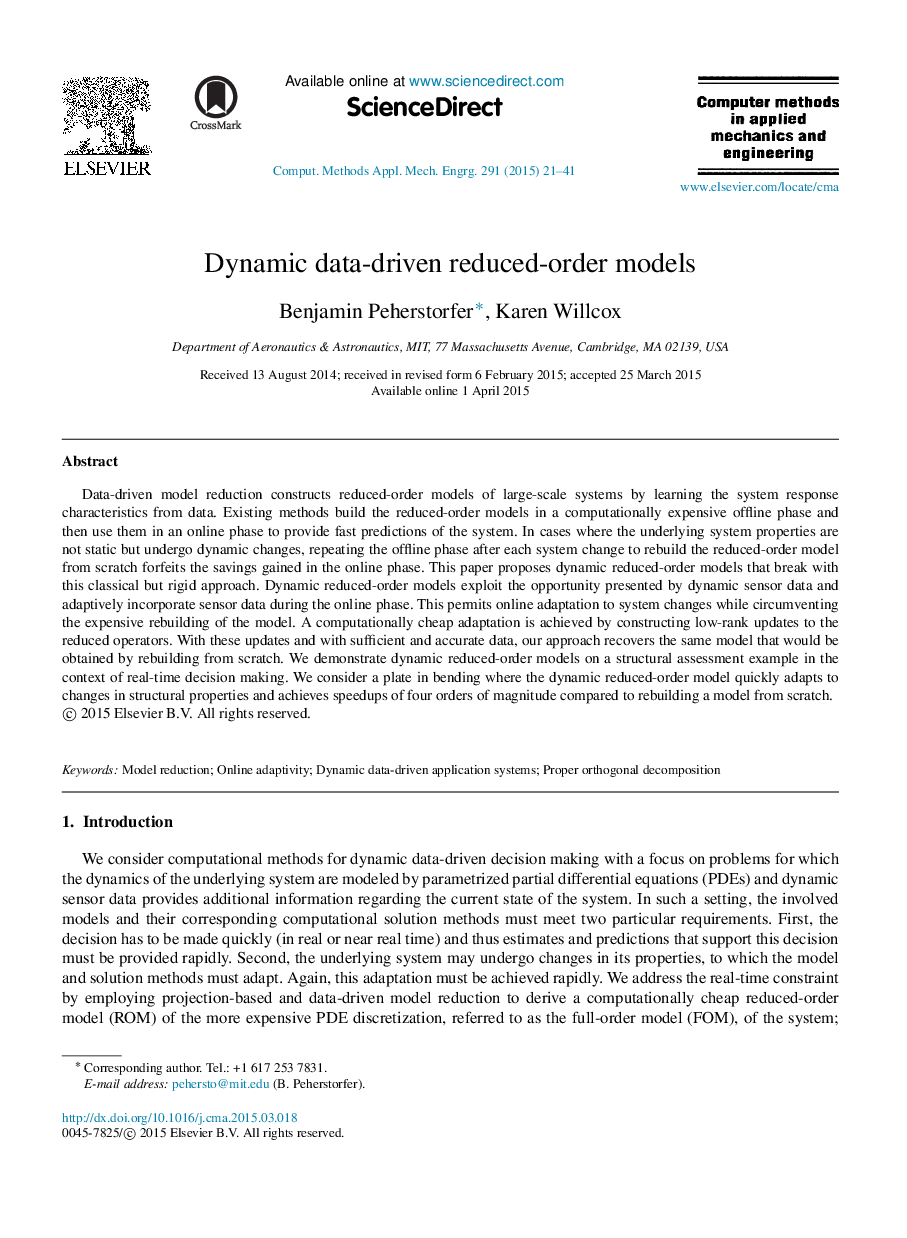| Article ID | Journal | Published Year | Pages | File Type |
|---|---|---|---|---|
| 498011 | Computer Methods in Applied Mechanics and Engineering | 2015 | 21 Pages |
Data-driven model reduction constructs reduced-order models of large-scale systems by learning the system response characteristics from data. Existing methods build the reduced-order models in a computationally expensive offline phase and then use them in an online phase to provide fast predictions of the system. In cases where the underlying system properties are not static but undergo dynamic changes, repeating the offline phase after each system change to rebuild the reduced-order model from scratch forfeits the savings gained in the online phase. This paper proposes dynamic reduced-order models that break with this classical but rigid approach. Dynamic reduced-order models exploit the opportunity presented by dynamic sensor data and adaptively incorporate sensor data during the online phase. This permits online adaptation to system changes while circumventing the expensive rebuilding of the model. A computationally cheap adaptation is achieved by constructing low-rank updates to the reduced operators. With these updates and with sufficient and accurate data, our approach recovers the same model that would be obtained by rebuilding from scratch. We demonstrate dynamic reduced-order models on a structural assessment example in the context of real-time decision making. We consider a plate in bending where the dynamic reduced-order model quickly adapts to changes in structural properties and achieves speedups of four orders of magnitude compared to rebuilding a model from scratch.
